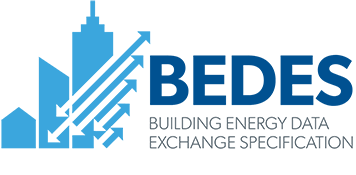Interested in developing a BEDES-compliant application? The BEDES team is available to provide guidance and technical assistance to a limited number of software developers and other entities, including help with developing mappings and checking compliance. To take advantage of this opportunity, please contact us: bedes.lbl.gov/contact-us.
There are two different paths for compliance: through Mapping and Exchange, as shown in Table 1. Mapping compliance documents the relationships between the native terms and definitions used in an application and their associated BEDES terms. See the BEDES Mapping Procedure bedes.lbl.gov/technical-documentation for guidance on how to create a mapping. Exchange compliance takes Mapping compliance one step further by establishing a schema for exchanging that information electronically.
BEDES COMPLIANCE TABLE
| Criteria | Mapping Compliance | Exchange Compliance |
|---|---|---|
| Application | Document showing mapping to BEDES terms | Schema with BEDES terms |
| Applicability | Software tools, schemas, database, data forms, etc. | Schemas |
| Map to BEDES terms1 | Yes | Yes |
| BEDES team approves mapping | Yes | Yes |
| BEDES team approves schema2 | Not Applicable | Yes |
| Public publishing on BEDES website | Yes | Yes |
| Right to use "BEDES" in product marketing | Yes | Yes |
1 Not all BEDES terms have to be used, only those that apply. Additional fields that are out of BEDES scope are allowed.
2 The exchange schema does not apply to a database or internal schema, only to export/import files meant to exchange data between applications.
Mapping Compliance. In "mapping compliance" an application implementation, such as the Commercial Building Energy Consumption Survey (CBECS), submits a Mapping Document to the BEDES implementation team for verification, which shows how the fields in the specific implementation map to the BEDES terms. Once this mapping is approved by the BEDES implementation team, the application can claim to have a "BEDES-Compliant Mapping." This mapping can be made publicly available so that all market actors can translate data from that data format into the BEDES format in a consistent way. To show mapping compliance, the application does NOT need to have an electronic file format that can import and export data (see Exchange Compliance). Mapping compliance may be a less expensive option because it does not require any additional software development. It is also a viable option for applications that do not hold any data, such as survey forms and data collection protocols, pre-existing research datasets, or for applications that are no longer supported but whose data is still in use.
Exchange Compliance. The BEDES implementation team is developing or adopting, in partnership with implementers, standard BEDES-compliant Exchange Schemas for various use cases, such as commercial and residential audit data, energy data, energy efficiency data, etc. Schemas organize the terms into a hierarchical structure, and can have required and optional fields, as well as procedures for validating that the data has been entered correctly and exchanged successfully. A BEDES-compliant Exchange Schema can have one or more formats, e.g., XML, CSV, JSON, etc., allowing the market to exchange data that is standardized and widely understood by all parties involved in the data transaction. Note that it is the schema that complies with BEDES, while individual tools and import/export files comply with the schema. Software tools could show "Exchange Compliance" with multiple exchange formats. For example, a software tool used for auditing could show "Exchange Compliance" for both residential and commercial audit schemas. Also note that in its most simple form of a CSV, an Exchange "Schema" does not necessarily include hierarchical or other structure.


